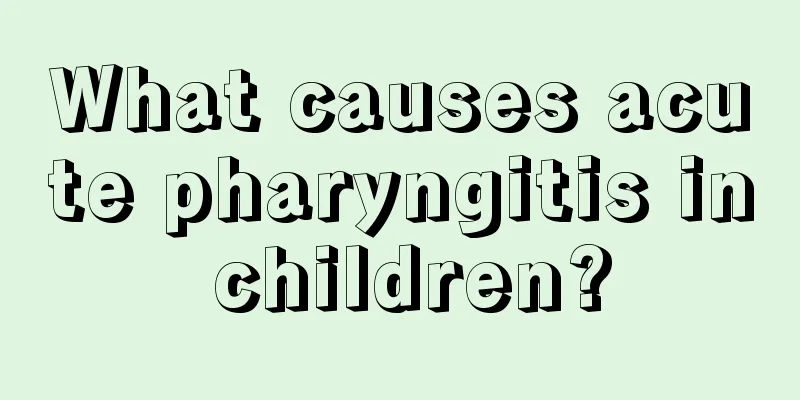What are the causes of red spots on the baby's body after the fever subsides?

|
Many parents are particularly worried when their baby has a fever. However, after the baby has a fever and the fever goes down through treatment, red spots appear on the body. Many parents are particularly worried that it will harm the health of their children. Secondly, they want to fully understand the causes of red spots on the baby's body after the fever goes down. The following content gives a detailed introduction so you can learn about it as soon as possible. Roseola infantum, also known as fever rash or roseola, is a sudden rash caused by a viral infection. It can occur throughout the year, but is more common in spring and autumn. It is common in babies between 6 months and 1 year old. The incubation period of roseola infantum is approximately 10 to 15 days. Although it is a contagious disease, it is very safe and will not spread as widely as measles or chickenpox. The chance of family members being infected at the same time is low. symptom: The baby first has a high fever that lasts for 3 to 4 days, with a body temperature between 39 and 40 degrees. After the fever subsides, a rash quickly appears all over the body, and the rash disappears quickly, without desquamation or pigmentation. These babies also have fever before the rash appears, and the fever can be quite high, but the symptoms of a cold are not obvious. Their spirits and appetite are still good. Their throats may be a little red, and the lymph nodes in the neck and occipital region can be felt but are not tender. There are no other symptoms or physical signs. When the body temperature is about to subside or has already subsided and a rose-red rash appears all over the body, people suddenly realize that the roseola infantum is almost over. Roseola infantum has no effect on the baby's health, and once it occurs, the baby will be immune for life. Care: Let the child rest. The ward should be quiet, the air should be fresh, and the blanket should not be too thick or too many. Keep your child's skin clean and hygienic, and wipe off sweat from his or her body frequently to prevent him or her from catching a cold. Give your child plenty of water or juice to help him sweat and urinate, thus promoting the excretion of toxins. Eat a liquid or semi-liquid diet. When the body temperature exceeds 39 degrees, you can wipe the child's body with warm water or 37% alcohol to prevent the child from having convulsions due to high fever. After the baby's fever subsides, red spots will appear on his body. The above details the cause of this situation. Therefore, after understanding the cause, in order to prevent this disease from harming the health of your children, parents must take their children to a large hospital and receive treatment as soon as possible. Only then can the small red spots on the child's body disappear as soon as possible through treatment. |
<<: Causes of ringworm in babies
>>: Causes of night cough in children
Recommend
What to do when children have toothache? Here are 5 tips
When children are teething, various conditions wi...
Can children eat Tremella?
There are actually not so many taboos regarding T...
How to care for a 3-year-old child with fever and cramps?
The most obvious symptom when a child has a fever...
The child wakes up in the morning with eye mucus stuck to his eyes
I believe everyone has encountered such a situati...
What is diarrhea in children?
Children are a group of people who need nutrition...
What causes a baby to cough when crying?
Crying can be said to be the privilege of babies....
What are the symptoms and treatment of mumps in children?
The symptoms and treatment of mumps in children a...
What to do if your child has otitis media
Once a child is sick, parents will be very nervou...
What is the reason why children breathe loudly when sleeping?
Whether a child is healthy is directly related to...
How to treat eczema herpeticum in children?
How to treat herpetic eczema is a question that t...
What's wrong with a five-year-old baby's astigmatism?
With the improvement of modern human living stand...
What should I do if my baby has separation anxiety?
Children are more dependent on adults. They will ...
What to do if your child's eyes are flashing
Generally speaking, myopia is accompanied by a li...
Can children eat donkey-hide gelatin cake?
Donkey-hide gelatin cake is a relatively good ton...
What to do if your child keeps coughing
Coughing is a disease that we are all afraid of. ...









